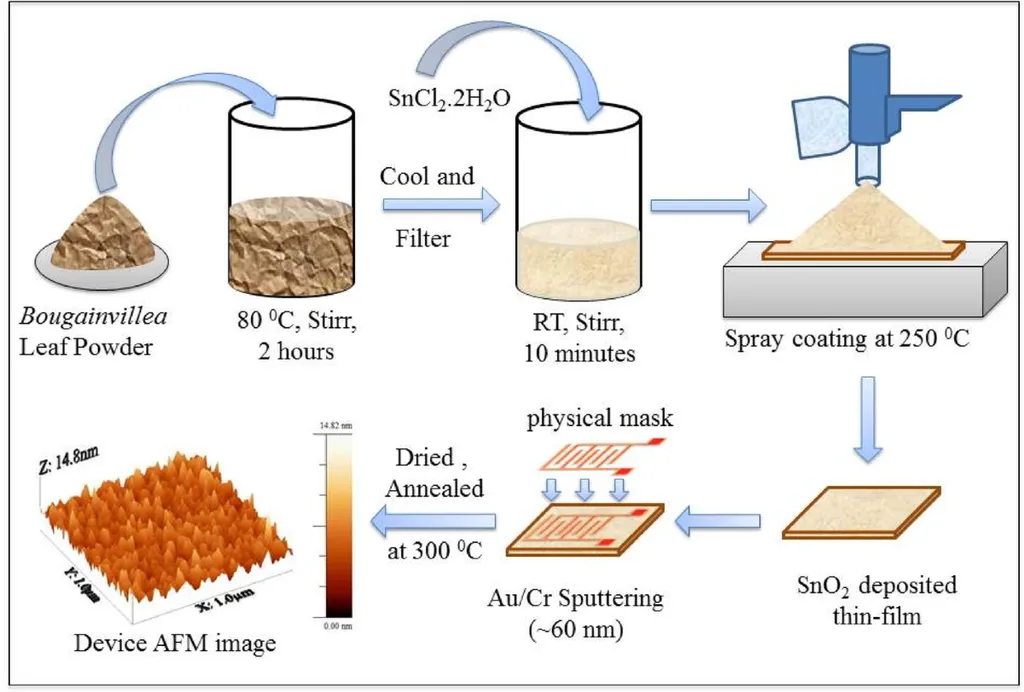In the heart of India, researchers have stumbled upon a novel way to detect hydrogen sulfide (H2S), a toxic and volatile gas, using a plant extract that could revolutionize safety measures in the energy sector. N. Bhuvaneshwari, a researcher from the Department of Electronics & Communication Engineering at SMVIT, has led a team that developed a bio-inspired sensor using Bougainvillea extract and tin dioxide (SnO2) thin films. Their work, published in the journal Discover Materials (which translates to “Exploring Materials” in English), opens up new avenues for environmental monitoring, industrial safety, and healthcare applications.
Hydrogen sulfide, a colorless and flammable gas, is a significant concern in industries like oil and gas, wastewater treatment, and agriculture. Traditional methods of detecting H2S often require high temperatures and complex equipment. Bhuvaneshwari’s team has tackled this challenge by creating a sensor that operates at a relatively low temperature of around 80°C, making it more energy-efficient and practical for real-world applications.
The researchers synthesized SnO2 thin films using Bougainvillea extract, a green and cost-effective approach. “The extract not only facilitates the synthesis but also enhances the sensing properties of the thin films,” explains Bhuvaneshwari. The team found that the flavonoid-derived functional groups from the Bougainvillea extract facilitated selective H2S adsorption, leading to improved sensitivity and selectivity.
The sensor demonstrated excellent sensitivity at low concentrations of H2S (around 5 ppm) and showed a rapid response and recovery time. “The sensor’s ability to selectively detect H2S among other volatile organic compounds (VOCs) is a significant achievement,” says Bhuvaneshwari. This selectivity is crucial in industrial settings where multiple gases are present, and accurate detection is paramount.
The implications of this research are far-reaching. In the energy sector, accurate and reliable H2S detection is vital for safety and environmental monitoring. Oil and gas industries, in particular, can benefit from this technology to prevent accidents and ensure worker safety. Additionally, the sensor’s low operating temperature and bio-derived components make it an eco-friendly and cost-effective solution.
Looking ahead, the integration of this sensor with electronic devices could enhance its practical utility. “Further optimization and miniaturization could lead to portable and wearable devices for real-time monitoring,” suggests Bhuvaneshwari. This could be a game-changer for healthcare applications, where continuous monitoring of H2S levels in the human body could provide insights into various health conditions.
The research published in Discover Materials highlights the potential of bio-inspired materials in advancing sensor technology. As Bhuvaneshwari and her team continue to refine their approach, the future of H2S sensing looks promising, with significant commercial impacts for the energy sector and beyond. This innovative work not only underscores the importance of interdisciplinary research but also paves the way for sustainable and efficient solutions in gas sensing technology.

